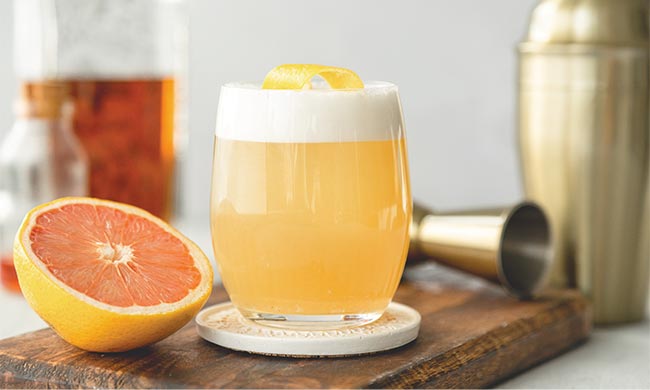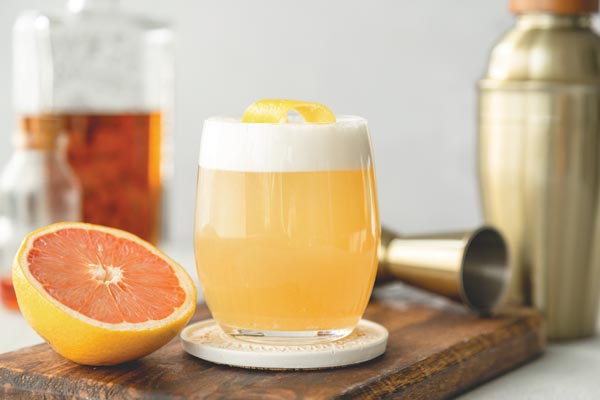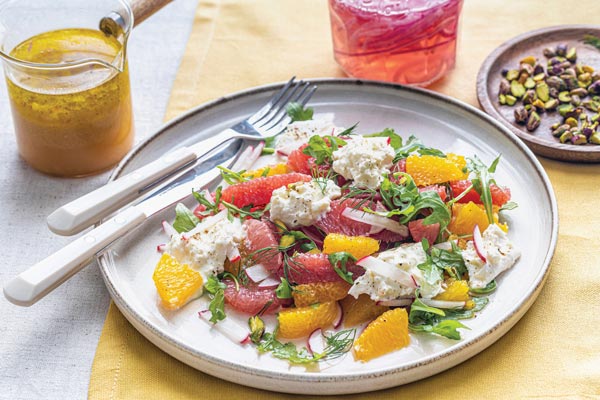Food and Beverage
Eating beans improves gut health, regulates immune and inflammatory processes in colorectal cancer survivors
Last Updated on September 13, 2025 by Rod Washington
Adding navy beans to diet diversified gut microbiome which could aid in cancer prevention and treatment

Newswise — HOUSTON ― Incorporating navy beans into the diet of colorectal cancer (CRC) survivors has the potential to positively impact both gut and host health by modulating markers linked to obesity and disease, according to new research from The University of Texas MD Anderson Cancer Center.
The findings published today in eBIOMedicine, part of The Lancet family of journals, revealed BE GONE trial participants who added a cup of navy beans daily to their regular meals saw positive changes in their gut microbiome, which is associated with cancer prevention and improved treatment outcomes. Changes included an increase of alpha diversity, or beneficial bacteria (Faecalibacterium, Eubacterium and Bifidobacterium) and a decrease in pathogenic, or opportunistic, bacteria.
“Observing a shift in microbiome diversity with diet intervention alone is rare, and this study underscores the ability of a readily available prebiotic food to bring about such changes,” said corresponding author Carrie Daniel-MacDougall, Ph.D., associate professor of Epidemiology. “Over the course of eight weeks, there was an improvement in participants’ gut health, marked by an increase in beneficial bacteria, which wards off the harmful bacteria.”
Obesity, poor diet, or gastrointestinal issues can cause disturbances in a person’s normal microbial balance. For people who have had or have CRC, these changes cause inflammation and can affect survival. Even after cancer treatment or precancerous polyp removal, a poor diet and an unbalanced gut microbiome can have negative effects on prevention efforts for both cardiovascular disease and cancer.
Beans, particularly small white navy beans, are full of gut-supporting fibers, amino acids, and other nutrients, which can help the beneficial bacteria in your colon flourish, supporting immune health and regulating inflammation, Daniel-MacDougall explains. Despite being accessible and cost-effective, the legumes are frequently avoided by Americans due to mild or acute gastrointestinal side effects, which can be mitigated by proper preparation and consistent consumption.
Daniel-MacDougall cautions that individuals should not attempt this diet without speaking to a physician, as it could have negative impacts without proper guidance. Further study is needed in order to determine how dietary changes can be used to lower cancer risk or improve treatment outcomes.
The randomized BE GONE trial followed 48 men and women over age 30 who met the criteria for obesity via body mass index (BMI) or waist size and who had a history of bowel lesions. This included patients with a history of CRC (75%) and/or high-risk, precancerous polyps of the colon or rectum detected at colonoscopy. For eight weeks, participants either followed their regular diet or included a daily cup of organic, canned pressure-cooked white navy beans.
Patients were able to choose and prepare their own meals, with close follow-up and counseling from the study dietitian. Every four weeks, participants provided stool and fasting blood samples to assess shifts in the gut microbiome as well as host metabolites and markers. Participants were considered adherent if they consumed at least 80% of the beans over the intervention period and followed the prescribed regimen at least five days a week. Limitations of this study include participant aversion to continually consuming navy beans. No serious side effects were reported.
“The beans did not appear to induce gut inflammation or seriously impact bowel habits, which is crucial for CRC survivors and patients,” Daniel-MacDougall said. “However, once participants stopped eating the beans, the positive effects faded quickly, highlighting the need to educate patients on how to maintain healthy habits.”
The study highlights the therapeutic role of naturally prebiotic-rich foods, while further emphasizing the need for consistent and sustainable dietary adjustments for high-risk cancer patients. In the next steps, researchers will focus on a wider variety of prebiotic foods and how changes to the microbiome affect patients undergoing immunotherapy.
The trial was funded by the American Cancer Society, with initial support from an MD Anderson Institutional Research Grant. Additional funding support was provided by the National Cancer Institute (NCI) (P30 CA016672), the Andrew Sabin Family Fellowship Program, the Cancer Prevention and Research Institute of Texas (CPRIT) (RP160097), and MD Anderson’s Moon Shots Program®. Study beans were independently purchased with funds from the Dry Bean Health Research Program, a peer-reviewed incentive award created by the Northarvest Bean Growers Association, Communique Inc. to identify and encourage researchers that apply for NIH-funding to support studies on beans and human health. A full list of co-authors and disclosures can be found here.
Read this press release in the MD Anderson Newsroom.
Journal Link: eBIOMedicineREQUEST AN EXPERT
Discover more from Daily News
Subscribe to get the latest posts sent to your email.
Food and Beverage
Usher in Cool Weather with Easy Pumpkin Soup
Pumpkin may be a classic fall flavor, but there’s no reason you can’t satisfy your craving for savory comfort foods all year long. Its smooth, creamy texture is a go-to ingredient for a variety of recipes, including this heartwarming and simple easy Pumpkin Soup.

Usher in Cool Weather with Easy Pumpkin Soup
(Family Features) Pumpkin may be a classic fall flavor, but there’s no reason you can’t satisfy your craving for savory comfort foods all year long. Forget spiced latte; with its wholesome nutrition and plenty of earthy flavor, pumpkin is the perfect ingredient for all kinds of flavorful dishes. It may inspire a warm, fall feeling but it’s much more than a seasonal product. Pumpkin puree can be enjoyed all year long mixed into your favorite baked goods, stirred into chilis or even scooped into your morning smoothie. The smooth, creamy texture of Green Giant 100% Pure Pumpkin, made in the United States with premium quality in mind, is a go-to ingredient for a variety of recipes, including this heartwarming and simple Pumpkin Soup. Simply simmer the pumpkin puree with coconut cream, vegetable stock, garlic and ginger for a soup that is comfort in a bowl. Explore new ways to enjoy seasonal recipes at greengiantvegetables.com.Watch video to see how to make this recipe!
 Pumpkin
Soup Cook time: 10 minutes
Servings: 4
Pumpkin
Soup Cook time: 10 minutes
Servings: 4- 1 can (15 ounces) Green Giant 100% Pure Pumpkin
- 1/2 cup coconut cream
- 1 cup vegetable stock
- 1 tablespoon garlic paste or 1 teaspoon garlic powder
- 1 tablespoon ginger paste or 1 teaspoon ground ginger
- salt, to taste
- pepper, to taste
- coconut rice, for serving (optional)
- bread, for serving (optional)
- In saucepan over medium heat, combine pumpkin, coconut cream, vegetable stock, garlic, ginger and salt and pepper, to taste. Stir until well incorporated, cook 10 minutes.
- Serve over coconut rice or with bread, if desired.
The fate of Lucky Supermarkets in SoCalLink: https://stmdailynews.com/the-fate-of-lucky-supermarkets-in-socal/
Discover more from Daily News
Subscribe to get the latest posts sent to your email.
Food and Beverage
Quick Teriyaki Chicken Bowl Recipe Using Foster Farms Precooked Strips
Quick 10-minute teriyaki chicken bowl using Foster Farms precooked chicken strips, store-bought teriyaki sauce, and rice. Fast, easy, and customizable weeknight meal.
Last Updated on December 13, 2025 by Daily News Staff
Grilled Chicken teriyaki rice (Adobe Sock)
When you need a fast, flavorful meal without the fuss, a teriyaki chicken bowl is one of the easiest dishes you can throw together. Using Foster Farms precooked chicken breast strips, store-bought teriyaki sauce, and ready-to-heat rice, you can have dinner on the table in about ten minutes — no chopping, marinating, or complicated prep required.
A Weeknight Staple
This recipe is ideal for busy weeknights, work-from-home lunches, or those moments when you want something warm and satisfying without relying on takeout. With precooked chicken, most of the work is already done for you. All you’re really doing is heating, mixing, and assembling.
“A complete teriyaki bowl in ten minutes — no takeout required.”
Ingredients
1–2 cups cooked rice (microwaveable rice packets work great) 1 cup Foster Farms precooked chicken breast strips ¼–½ cup teriyaki sauce, depending on how saucy you like it 1 cup of vegetables (fresh, steamed, or frozen) Optional toppings: sesame seeds, green onion, pineapple chunks, spicy mayo, red pepper flakes
![]()
Instructions
1. Prep the Base
Start with your rice. If you’re using microwave rice, it heats up in about 60–90 seconds. Leftover rice works just as well — just warm it in a bowl before assembling the dish.
2. Heat the Chicken
Foster Farms precooked chicken strips make this step incredibly simple. Just heat them in a skillet for a couple of minutes or microwave them for under a minute. Add a few tablespoons of teriyaki sauce and stir to coat the chicken evenly.
3. Add the Vegetables
This bowl works with almost any vegetable you enjoy. Frozen stir-fry mixes are quick and convenient, while steamed broccoli or carrots add color and crunch. Toss the veggies into the pan with the chicken so they absorb the teriyaki flavor.
4. Build Your Bowl
Add your rice to a serving bowl and top it with the teriyaki chicken and vegetables. If you want a richer flavor, drizzle on a little extra teriyaki sauce.
5. Customize With Toppings
Finish with sesame seeds, sliced green onions, or a drizzle of spicy mayo. Pineapple adds a sweet touch that pairs perfectly with teriyaki, giving your bowl a subtle Hawaiian twist.
👉 Download the Teriyaki Chicken Bowl Recipe PDF
Why This Recipe Works
What makes this meal so appealing is its flexibility. Use whatever rice you have on hand, swap in your favorite veggies, and adjust the sauce level to your own taste. It’s fast, affordable, and customizable — ideal for anyone looking to simplify their cooking without sacrificing flavor.
Do you have your own fast weeknight recipes or kitchen shortcuts? Share them with us in the comments or tag @STM Daily News on social media. We love spotlighting great ideas from our readers!
The fate of Lucky Supermarkets in SoCal
Further Reading & Resources
Discover more from Daily News
Subscribe to get the latest posts sent to your email.
Beverages
Grazing and Gifting: Sweet Solutions for the Holiday Rush
Grazing and Gifting: hMake holiday entertaining and gifting easy with Florida Citrus. Discover delightful recipes—like Scallops with Grapefruit Butter and Citrus Salad with Burrata—and send sweet, healthy citrus gift baskets to loved ones for a memorable, stress-free season.

Grazing and Gifting: Sweet Solutions for the Holiday Rush
(Family Features) If you feel yourself slipping into the last-minute rush of the holiday season, still searching for dazzling recipes and abundant gifts, rest assured – you’re not alone. Light, refreshing ingredients for spectacular meals are just a click away, and they can make for the perfect presents, too. Abundantly sweet and simple, Florida Citrus Gifts are a simple way to share holiday cheer with family, friends and loved ones. From cheerful boxes to beautiful baskets and more, they offer options in all shapes and sizes, loaded with freshly picked tangerines, grapefruits, oranges and mandarins. They’re easy to send and even easier to enjoy, providing a one-of-a-kind (and healthy) way to share holiday cheer in memorable meals like Scallops with Florida Grapefruit Butter, sure to become a household favorite for years to come. Pair it with a light and refreshing Florida Citrus Salad with Burrata featuring fresh grapefruit and oranges mingling with peppery arugula and creamy burrata to bring a bit of balance to holiday dining. No festivity is complete without libations, and this Florida Grapefruit Brandy Sour can be a staple at your beverage station. Just mix freshly squeezed Florida Grapefruit juice with brandy, simple syrup, bitters and egg white (for froth) then finish with sparkling water. Find deliciously thoughtful ways to share the sweetness of the season with loved ones by visiting PickFLA.com, which features an interactive map to find a range of gift options that fit your holiday needs.
Abundantly sweet and simple, Florida Citrus Gifts are a simple way to share holiday cheer with family, friends and loved ones. From cheerful boxes to beautiful baskets and more, they offer options in all shapes and sizes, loaded with freshly picked tangerines, grapefruits, oranges and mandarins. They’re easy to send and even easier to enjoy, providing a one-of-a-kind (and healthy) way to share holiday cheer in memorable meals like Scallops with Florida Grapefruit Butter, sure to become a household favorite for years to come. Pair it with a light and refreshing Florida Citrus Salad with Burrata featuring fresh grapefruit and oranges mingling with peppery arugula and creamy burrata to bring a bit of balance to holiday dining. No festivity is complete without libations, and this Florida Grapefruit Brandy Sour can be a staple at your beverage station. Just mix freshly squeezed Florida Grapefruit juice with brandy, simple syrup, bitters and egg white (for froth) then finish with sparkling water. Find deliciously thoughtful ways to share the sweetness of the season with loved ones by visiting PickFLA.com, which features an interactive map to find a range of gift options that fit your holiday needs. 
Florida Grapefruit Brandy Sour
Recipe courtesy of the Florida Department of Citrus Prep time: 5 minutes Servings: 1- 1 3/4 ounces brandy
- 2 1/2 ounces freshly squeezed Florida Grapefruit Juice
- 1/3 ounce simple syrup, or to taste
- 2 dashes bitters
- 1 egg white
- ice cubes
- 1 ounce sparkling water
- Florida Grapefruit twist, for garnish
- In cocktail shaker, add brandy, Florida Grapefruit juice, simple syrup, bitters and egg white. Shake vigorously 15-20 seconds to create frothy texture.
- Add ice cubes to shaker and shake 15 seconds to chill drink.
- Strain into chilled coupe or rocks glass filled with fresh ice.
- Pour light splash of sparkling water over top to enhance effervescence.
- Garnish with grapefruit twist.

Scallops with Florida Grapefruit Butter
Recipe courtesy of the Florida Department of Citrus Prep time: 30 minutes Cook time: 3 minutes Servings: 4- 2 Florida Grapefruit
- 1 fennel bulb
- 3 tablespoons olive oil, plus additional for searing, divided
- 1 tablespoon sherry vinegar
- 1/8 teaspoon, plus 1 pinch, salt, divided, to taste
- 1/8 teaspoon, plus 1 pinch, pepper, divided, to taste
- 1 small bunch fresh cilantro
- 12 scallops with empty shells
- 1 tablespoon butter
- Peel and cut one Florida Grapefruit into segments. Squeeze remaining grapefruit and reserve juice.
- Wash and finely chop fennel. In bowl, mix fennel with olive oil, sherry vinegar and 1 pinch salt and pepper.
- Mix and add fresh cilantro. Keep a few leaves for garnish.
- In hot frying pan, drizzle with olive oil then sear scallops 1 minute on each side.
- Remove scallops from pan then deglaze with reserved Florida Grapefruit juice. Let it simmer slightly and add butter to make sauce. Add 1/8 teaspoon salt and pepper.
- Place 1 tablespoon fennel salad in washed shell, top with three scallops and coat with grapefruit butter.
- Finish with reserved cilantro leaves and fresh grapefruit segments.

Florida Citrus Salad with Burrata
Recipe courtesy of the Florida Department of Citrus Florida Citrus Vinaigrette:- 1/3 cup Florida Grapefruit Juice
- 1/3 cup Florida Orange Juice
- 2 teaspoons orange zest
- 2 tablespoons cider vinegar
- 2 teaspoons honey
- 1 tablespoon Dijon mustard
- 1/3 cup olive oil
- 2 tablespoons shallots
- sea salt, to taste
- fresh pepper, to taste
- 1 red onion, thinly sliced
- 1/2 cup white vinegar or cider vinegar
- 1/2 cup water
- 1 tablespoon sugar
- 1 teaspoon salt
- 4 Florida Grapefruit, peeled and cut into segments
- 3 oranges, peeled and cut into segments
- 1 bunch radishes, sliced thin and cut into sticks
- 1/3 cup pistachios, grilled and coarsely chopped
- 1 cup arugula
- 2 tablespoons dill, chopped
- sea salt, to taste
- pepper, to taste
- 8 ounces burrata
- To make vinaigrette: In small bowl, mix Florida Grapefruit Juice, Florida Orange Juice, orange zest, cider vinegar, honey, Dijon, olive oil and shallots until dressing is emulsified. Season with salt and pepper, to taste. Set aside. Vinaigrette will keep 7 days in refrigerator.
- To make pickled onion: Place sliced onion in airtight canning jar.
- In small saucepan, combine vinegar, water, sugar and salt. Bring to boil and pour over sliced onion in jar. Add small amount of water to completely cover onion. Refrigerate at least 2 hours before serving. Pickled onions will keep 15 days in refrigerator.
- To make burrata salad: In bowl, combine Florida Grapefruit and Orange segments; add radish sticks, toasted pistachios, arugula and dill. Season with salt and pepper, to taste.
- Place salad on large plate, top with coarsely chopped burrata and drizzle generously with citrus vinaigrette and pickled onion.
At our core, we at STM Daily News, strive to keep you informed and inspired with the freshest content on all things food and beverage. From mouthwatering recipes to intriguing articles, we’re here to satisfy your appetite for culinary knowledge.
Visit our Food & Drink section to get the latest on Foodie News and recipes, offering a delightful blend of culinary inspiration and gastronomic trends to elevate your dining experience. https://stmdailynews.com/food-and-drink/
Discover more from Daily News
Subscribe to get the latest posts sent to your email.

